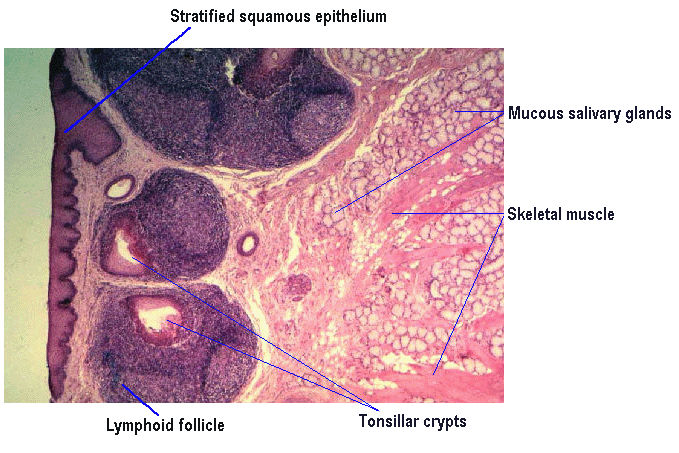HN3.H1.8 +D1 +D2 Tonsils
Tonsils:
- Lymphoid tissue may be found in defined organs such as the spleen and lymph nodes
- However, less defined accumulations of lymphoid tissue can be found: these are collectively known as non-encapsulated lymphoid tissue
- These types of lymphoid accumulation range from a cluster of small lymphocytes to fully organised lymphatic nodules in the loose connective tissue of the mucous membrane
- In some locations there may be several lymphatic nodules clustered together
- These areas include, Peyer's patches in the ileum of the intestine, the appendix and the tonsils in the pharynx
- In tonsils, the lymphoid tissue lies in the lamina propria just deep to the surface epithelium
- The lymphoid tissue may be so extensive that it extends into the submucosa
- As in lymph nodes and spleen, the tonsils contain numerous lymphatic nodules
- The epithelium which overlies the tonsil is characteristic of the region in which the tonsil is located
- The nasopharyngeal tonsil is located in the nasopharynx which is lined with pseudostratified ciliated columnar epithelium with goblet cells (respiratory epithelium): the lymphoid tissue there is overlain with respiratory epithelium
- Where the tonsillar tissue is extensive, the epithelium may give rise to deep infoldings which increase the surface area across which antigens can access the lymphoid tissue and be monitored
Question:
Answer Submitted
Palatine Tonsil:

Lingual Tonsil:

